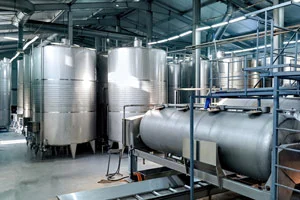WHAT IS MUST FLOTATION?
Flotation is a separation technique that, like decantation, takes advantage of the difference in specific gravity between the liquid and the particles in the liquid. However, while in decantation the solid substances are characterized by having a specific weight greater than that of the liquid, in flotation the opposite situation occurs, resulting in an increase in the speed of the movement of the particles from bottom to top. Our flotation system allows continuous clarification and stabilization of large quantities of must, significantly reducing the treatment costs of the processed product and limiting the impact on the environment. The process begins by adding pectolytic enzymes to the dirty must and allowing them to act for at least 1 ½ hours.
APPLICATION
In order to optimize the flotation process, a series of flocculants and clarifying agents must be added to the raw must to form coagulates that can then be dragged to the surface. These adjuvants are:
- Bentonite: to create flocs.
- Gelatin: to make these flocs consistent.
- Silica Sol: to compact the flotation dregs as much as possible.
This entrainment is produced by pressurizing the must through the addition of gas (usually air). The flotation itself is carried out in a tank available downstream of the system, where the pressurized must is introduced at the base and left to settle for 1 hour to allow flotation to take place. Once this time has elapsed, the clean must is extracted through the base of the tank. When the flotation dregs start to come out, they are sent to a different tank. The clarity of the must obtained is approximately 50 NTU. However, the system can be operated to increase the NTU number.



